All the passengers were seated, and my co-pilot walked through the cabin, making sure that everyone had their seat belts fastened. The ground crew closed the main door and gave me the thumbs up to start the left engine. Paul, my co-pilot who I had flown with on many occasions, said, “Cap, everyone’s belted in, full capacity, and the manifest looks ok.”
I checked the instrument panel and made sure the right engine, which we kept running while on these shortstops, was still within temperature limits, and we had good battery power to start the left engine. Just before starting the engine, I turned to the co-pilot and asked for the manifest and load sheet that had to be approved and signed before takeoff.
Paul handed me the clipboard and said full cargo and passengers. 18 passengers and 1,100 pounds of cargo. I checked to make sure the total reflected his words and that our maximum weight for takeoff did not exceed the limits of the Twin Otter, series 200 that we were flying. Max takeoff weight for this aircraft was 11.579 pounds. The load sheet showed the correct figure. However, the manifest sheet was a bit messy and smudged, but I was more concerned about the load sheet than the pax/load manifest.
The Ogle airstrip was not very long and mainly used by smaller airplanes and light twin-engine aircraft that regularly used this runway. The Ogle airstrip was owned and operated by the Booker Group of Companies to maintain and serve as a base for its crop duster aircraft that fertilized the sugar and rice fields that dominated this location just East of the capital city, Georgetown.
Most of Georgetown and the East Coast of Guyana was at least 9 feet below sea level. The Dutch, during their occupation of the country, had built a robust sea defense structure and aptly named “seawall.” The airstrip at Ogle was approximately one mile from the seawall. The land sloped away from the seawall and was quite a bit lower than 9 feet.
The airstrip was a narrow band of concrete 1,200 feet long, and 30 feet wide with a grass overrun approximately 400 feet in length. Not a typical type of location from which any airline would operate a Twin Otter. However, the Twin Otter, a STOL (Short Takeoff and Landing) aircraft, was quite capable of using this short airstrip. It was situated with a row of hangars on one side and an open area on the other. At the end of the runway, the land sloped gradually down to a low fence that bordered a narrow canal.
What made this location even more critical, the average temperature was usually between 90-95 degrees F and very humid. I made sure that Paul had checked the small handheld engine power calculator that DeHavilland had included with the aircraft and asked for the maximum engine temperature for the takeoff. He read out the numbers we should be using as we taxied down the narrow airstrip.
I pivoted the airplane at the end of the airstrip and lined up for takeoff. We completed the takeoff checklist, and one last thought went through my mind. Hot day, very humid, full load, and a short field! I was going to need a good takeoff run and slow climb out to clear the seawall. I decided to use 20 degrees flap to improve the short-field capabilities and shorten the takeoff roll.
I kept my feet firmly on the brakes, and told Paul to keep his eye on the engine temperatures (ITT gauges) to make sure we did not overtemp the engines! He acknowledged the command. I then moved the throttles up slowly, and Paul said, “looking good, Cap,” and I clicked the mike button on the handle of the control yoke. I checked the other gauges, and all was in order and showing green.
I released the brakes, and the aircraft started its takeoff roll. As the Twin Otter began picking up speed, the airspeed indicator came to life and showed a moderate increase in speed. Unfortunately, the concrete strip was disappearing at a rapid pace, and I immediately sensed that we might have a problem. The Ogle airstrip is so short that it does not allow for an aborted takeoff. Once you start the takeoff run and the aircraft has achieved 50 knots, you are committed to takeoff.
As I watched the airstrip quickly coming to an end, and only the grass overrun available, I made the only decision I could. I jammed the throttles to the stops and prayed that we could make it over the fence. Thankfully, I had many hundreds of hours with short field takeoffs from my past bush flying experience, only in smaller and lighter aircraft.
Paul immediately shouted in a panic, “Cap the ITT temperatures are all in the red,” I ignored him and kept my eyes on the end of the airstrip and the airspeed indicator. The fear of running off the end of the airstrip was uppermost in my mind, and inevitably if we did, the aircraft would run down the slope, crashing into the fence and ending up in the shallow canal, all certainly guaranteeing severe injuries, possible death for everyone, and destruction of the airplane!
While these thoughts were percolating in my sub-conscious, I felt the Twin Otter feel lighter and almost ready to fly. I slowly pulled back on the control yoke and eased the airplane off the ground. We ran out of concrete airstrip, and the aircraft left the ground sluggishly. We were not out of the woods by any means, The Twin Otter sank for a few feet after the takeoff but immediately stabilized, possibly from some type of ground effect updraft.
Paul was now yelling – “Overtemp warning Cap, Overtemp!” His gaze was fixated on the engine gauges. He had not looked out of the cockpit to see what we were facing. I could not even spare him a comment. I was involved with trying to navigate a path between a few houses that were located along the flight path.
I distinctly remember a strange site. As we were weaving through the area, only a few feet above the ground, I saw a woman hanging out her washing on her front porch, and she was actually looking down at the aircraft in horror as we went by!
By this time, many of the passengers sitting at the windows were screaming. I was now concentrating on dodging the last few houses in the pasture and looking at the seawall, that was at least 10, possibly 15 feet above our flight path and only a half-mile away.
I still had my hand firmly on the throttles fully up against the firewall. The co-pilot was now also looking outside and cried out – “Cap, the seawall, it’s higher than we are”! I did not even answer, concentrating on what moves I could make to get the aircraft to climb enough to clear the seawall.
We could not turn left or right as there were obstacles on both sides of the flight path, and we were now committed to flying straight towards the wall and hoping to clear it.
As we neared the seawall, I moved my hand to the flap lever and gently moved it upward to reduce the amount of flap we were carrying. Thanks to the intensive flight training that most pilots adapt to and learn, I could recognize by feel to locate all the levers, instruments, and controls in the cockpit blindfolded! It is the type of training that saves lives.
The Twin Otter had finally reached a minimum speed that allowed me some latitude to make a very slight backward movement on the control yoke. As I did this, I felt the aircraft achieve some minor lift, and I eased off a bit more flap.
We were now getting close to the last few thousand feet to the seawall. The screaming from the passengers had subsided somewhat as they could not see the seawall directly in front of the aircraft.
“Cap, are we going to make it over the seawall?” Paul asked shakily and looking quite pale. I could not even respond, keeping my focus on the growing sight of the wall and getting a feel of how light the aircraft was responding to my inputs.
As we got within a few hundred feet of the wall, I felt a small updraft, and I pulled back ever so slightly on the control yoke. The marvelous aircraft climbed a few feet, and we made it over the wall with a couple of feet to spare!
Now at least we were over the shoreline and only the ocean below us. The aircraft maintained a modicum of stability, and I felt the worst was over. I finally looked at the engine gauges and noticed that the engine temperature gauges were still in the red. I then looked up at the flap control and reduced it to 10 degrees and gently pulled the throttles back from the firewall position.
I now took stock of the situation and knew beyond a shadow of a doubt the aircraft was overloaded. It had almost cost the lives of everyone on board. I was now mad as hell and wanted answers.
The Twin Otter, great aircraft that it was, could only handle so much in terms of overload on a long runway with no obstacles. On the Ogle airstrip, this was almost a certain death sentence.
Obviously, I was not going to continue the flight and called up the operations frequency on the HF radio and told the operator that we were diverting to Timehri (our airline home base) due to a malfunction. I was told to stand by, while the Operations Manager was informed. I told Paul to monitor the company radio frequency and asked him for the load sheet clipboard.
Before paying attention to the clipboard, I made a gradual left turn at low altitude. The aircraft was still climbing but very slowly, and I still had the 10-degrees flap deployed. Then I looked at the load sheet. It appeared correct, and the total was at our all-up weight for the Twin Otter.
I then lifted the load sheet and inspected the passenger and cargo manifest. I immediately noticed something strange. Most of the passenger weights had corrections or were written over and looked as if they were changed! This situation bothered me, and I started looking closely at each of the listed weights.
In the aviation industry and, in accordance with internationally accepted figures (ICAO & IATA) the average weight of a passenger was agreed upon as 170 pounds. However, when operating aircraft in less than ideal conditions, or when operating in a STOL capacity, actual passenger weights are recorded.
I now saw a multitude of errors in the listing weights of passengers, and this may have extended to the cargo as well. I was pretty well pissed by this time.
The co-pilot said, “Cap, operations wants to know what malfunction you are referring to, and whether you can not complete the flight?”
“Ok, Paul, I will talk to operations. I want you to look at the passenger manifest very carefully and see if you notice anything strange.” I handed him the clipboard and called the operations dispatcher on the HF radio.
“Operations, this is the Captain speaking. We are diverting to Timehri as we will not be able to complete the flight due to the dangerous overloading of the aircraft and subsequent safety of flight conditions. Captain, out.” I said.
There was a lengthy pause on the radio. The dispatcher said the Base Manager would be notified that you are diverting to Timehri. What is your ETA Timehri?
I gave the dispatcher our ETA and said I needed some information passed to the Base Manager. The dispatcher asked me what the message was for him.
I said, “I need the aircraft to be met by the Base Manager, at least two ground staff and a weight scale.”
The dispatcher seemed a bit confused! He said, “Please repeat the instructions, Captain.”
I repeated the instructions and added, “I also want to park the aircraft away from the flight line as I need the passengers from this flight, separated from any ramp personnel or other spectators.”
Paul looked up from the paperwork and had a worried look on his face. “Cap, there is something very wrong here. Am I responsible for this?” He asked.
I responded, “No, in the short space of time you were given the clipboard and the final numbers, you were mainly concerned about the all-up weight of the aircraft and not the individual passenger or cargo weights! Those numbers originate with the ground-based personnel who generated the totals for you.”
“However, Paul, there are incredibly bad errors in both passenger and cargo manifest and then made worse by showing the total weight within the operating limits of the aircraft. A dangerous error and one that I intend to find out who was responsible.” I said.
I asked him to call the tower and get approach clearance for Timehri. We then completed the approach checklist and prepared for landing. I made the announcement to the passengers over the PA. There was some grumbling from a few of them about why we were landing at Timehri, instead of heading to Matthews Ridge, our original destination. I did not respond.
The tower cleared us to land on runway 10. Once we were lined up on the approach, I started to pull back on the throttles when I saw the ITT temperatures were still elevated and now worried that we had probably damaged the engines! I was now thoroughly pissed.
As soon as I reduced power on the engines to our normal approach speed, the aircraft immediately sank quickly, forcing me to add considerable engine power to maintain a safe approach path to the runway. I needed to keep applying power as we settled onto the runway. Once the aircraft touched down and we taxied off the active, both Paul and I managed to look at each other and grinned. “Mate, that was a close one,” I said, and he just nodded. Then he said, “Cap, I didn’t think we were going to make it. I was scared we were going to hit the seawall!”
We completed the after-landing checks and taxied the aircraft to the Guyana Airways main terminal area. I called the dispatcher and asked him to relay a message to Engineering. I told him to request an engine mechanic to meet me at the airplane as I was concerned about an engine overtemp situation. He said he would pass the message on.
As we approached the flight line, the ground crew guided us to an area adjacent to the main building but away from the other parked airplanes. I noticed that there was quite a reception awaiting us, including the Base Manager and a few of the office staff. And there was two ground crew standing by a weight scale that is used to weigh cargo before loading onto aircraft.
Once we were parked, and the engines had spooled down, I opened my door and told one of the ground crew to ask the Base Manager to come to the cockpit door. When he arrived, I jumped down from the cockpit and spoke quietly to him. “Andy, there was a dangerous mistake made at Ogle with the load sheet and the passenger manifest. I want everything taken off, passengers, and cargo, and weighed on this scale.” I said.
The Base Manager said, “You can’t mean that, Captain? What’s up with the load and the manifest sheet?” He said with an incredulous look in his eyes!
I tried hard not to lose my cool and said, “Andy, don’t doubt me. There are definitely mistakes in both the load manifest and the load sheet. And I intend to get to the bottom of this problem.” He looked away and finally agreed and spoke to the office staff and ground crew. He then asked me for the manifest so he could check the names of the passengers. I told him that the co-pilot Paul would be the one checking the names and writing down the weights of the passengers.
We walked back to the main door, and I climbed up into the cabin and asked everyone to please deplane and have them wait outside until I was able to set up a flight to Matthews Ridge for them. When I stepped back down to the ramp, I told Paul to make sure that everyone is weighed and the numbers written on a separate sheet of paper. He agreed and said, “I got it, Cap, no problem.”
We stood at the foot of the airstairs while the passengers were offloaded and weighed as they stepped off the aircraft. Paul kept a tally of the weights after all the passengers were off, and then he did the cargo weights. I was standing off to one side while this was being completed. When I saw the last passenger had disembarked, I looked into the cabin and peered under the seats to make sure no one had left any bags. I noticed a lot of pipes under the seats and asked Paul to go into the cabin and tell me how long they were. He said that they were well over ten feet long and stretched most of the length of the cabin.
I asked him how much did the load manifest say the pipes weighed? Paul said they were listed at 1.200 pounds! I was astonished at this revelation. I told the ground crew to offload the pipes and weigh them. The total weight of the pipes came to 2.200pounds!
And when we were able to look at the passengers’ weights and compared them to the actual figures we just complied, we now knew that some numbers were changed to show a lower value. A shocking scenario and one that nearly caused the lives of innocent people.
Andy, the Base Manager, came up and asked to have the paperwork turned over to him. He wanted to check for himself to see if a mistake was made, and who might have been responsible.
At that point, there was no way I was relinquishing the paperwork to anyone. I told him that I would be making a report to the Chief Pilot, the Operations Superintendant, and the General Manager of the Airline. He looked quite upset, but could not overrule my decision.
When I calmed down in the flight crew ready room later, I was able to review the final tally of the passengers and cargo from the flight with Paul. The number of errors was staggering.
I was amazed that we were able to take off from the Ogle airstrip on a hot and humid day with well two thousand pounds overweight. Fortunately, we were able to live to tell the story.

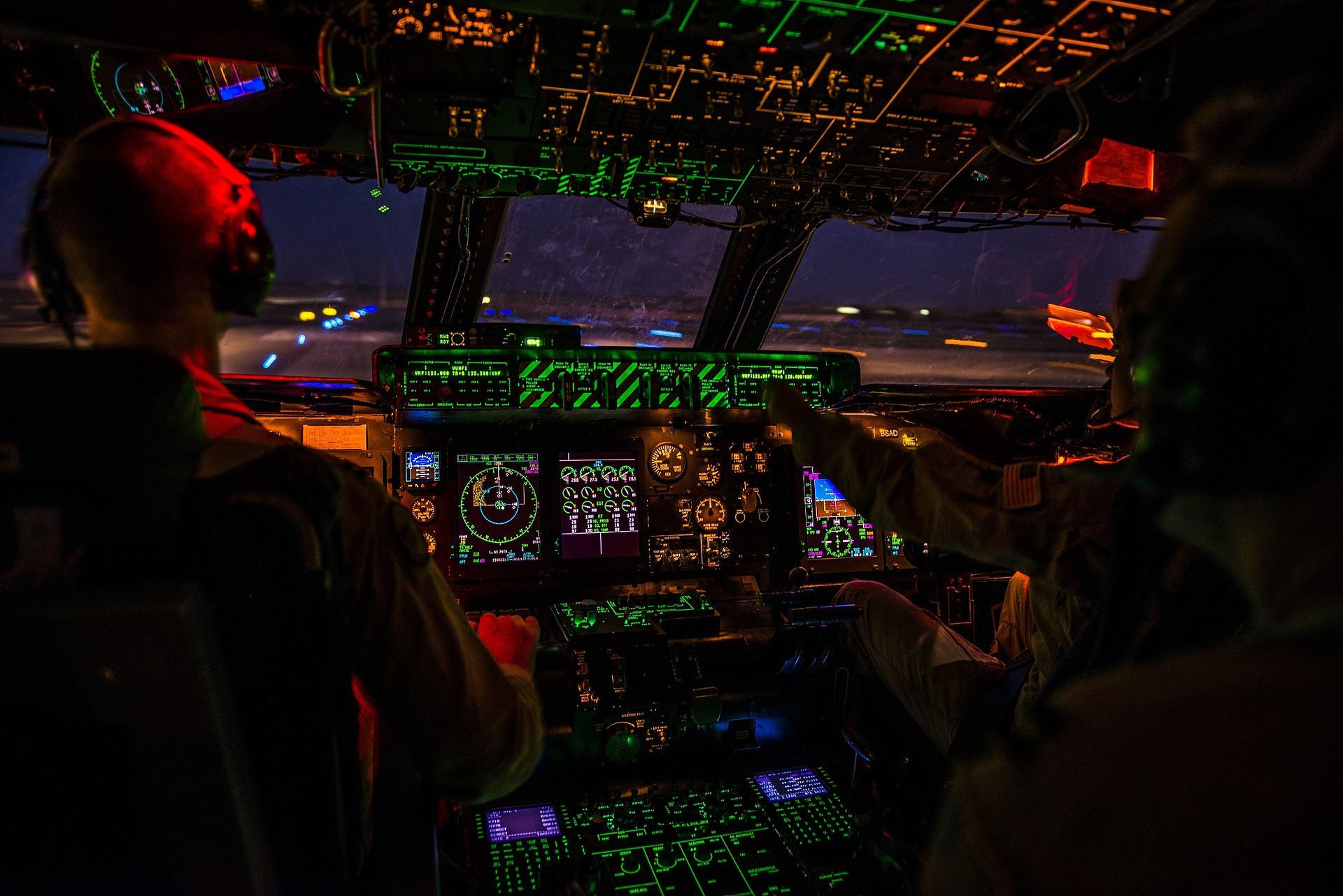
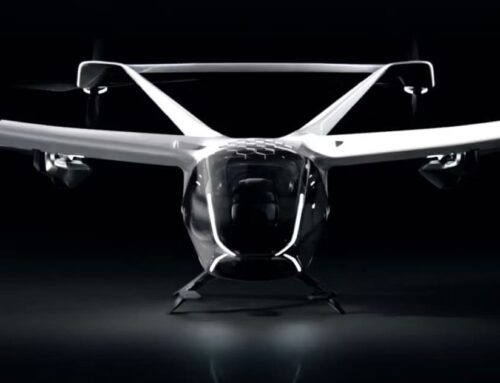
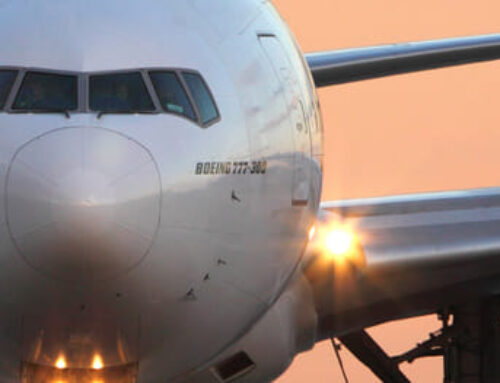
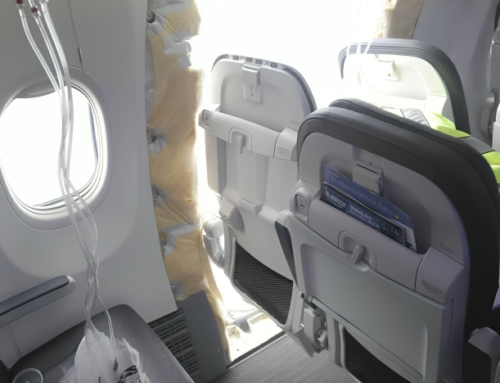
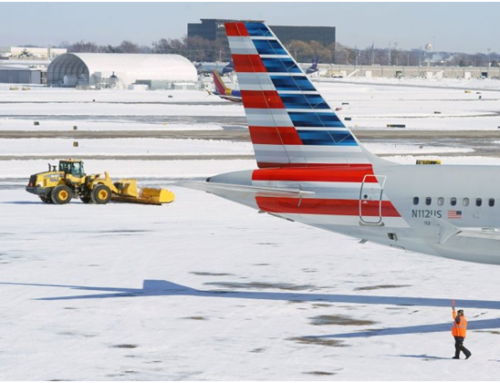
Leave A Comment